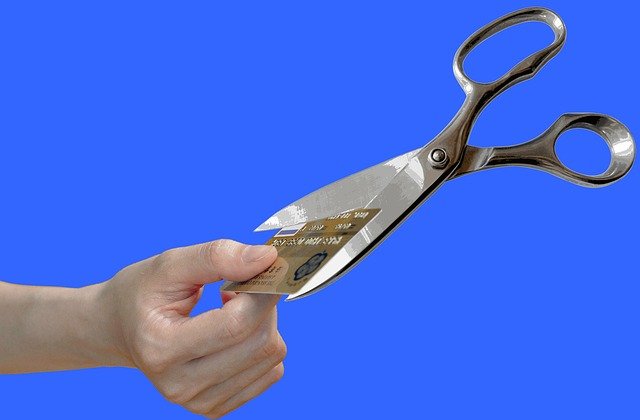Exploring E-Bike Financing: What to Know Before Choosing Monthly Payments
As electric bikes gain popularity around the world, more people are turning to financing options that allow for flexible monthly payments instead of upfront costs. But what does financing an e-bike actually involve? From credit checks to alternative payment models, this article explores how buyers are navigating the shift toward accessible, installment-based ownership—regardless of location or financial background.

How Monthly E-Bike Financing Works Across Different Regions
Monthly e-bike financing operates through various models depending on your location and local financial regulations. In North America, many retailers partner with financing companies like Affirm, Klarna, or specialized bike financing services such as Synchrony Financial. These services typically offer payment plans ranging from 6 to 48 months with varying interest rates.
European markets often feature different approaches, with some countries offering government-backed incentives that can be combined with financing options. For instance, Germany’s bike leasing programs allow employees to lease e-bikes through their employers, while the Netherlands has established partnerships between banks and bike retailers for specialized e-bike loans.
In Australia and New Zealand, buy-now-pay-later services like Zip and Afterpay have gained traction for e-bike purchases, offering shorter-term payment plans typically spanning 4 to 24 months. The regulatory environment in each region affects interest rates, terms, and approval processes, making it important to research local options.
What to Consider Before Applying for an E-Bike Loan
Before applying for financing, evaluate your monthly budget to determine what payment amount works comfortably within your expenses. Consider the total cost of ownership, including insurance, maintenance, and potential repairs, as these ongoing costs should factor into your decision-making process.
Interest rates can vary significantly based on your credit score, the financing provider, and loan terms. Zero-percent financing offers may be available but often come with shorter repayment periods or stricter qualification requirements. Compare the total amount you’ll pay over the loan term versus the bike’s retail price to understand the true cost.
Additionally, review the financing agreement’s fine print for early payment penalties, late fees, and what happens if you need to return or exchange the bike. Some agreements may include protection plans or warranties, while others may require separate insurance coverage.
Options for Buyers with Limited or No Credit History
Buyers with limited credit history aren’t automatically excluded from e-bike financing. Several alternative options can help you secure a bike without an extensive credit background. Co-signer arrangements allow someone with established credit to guarantee your loan, often resulting in better terms and higher approval chances.
Buy-now-pay-later services frequently have more lenient credit requirements compared to traditional loans, though they typically offer shorter repayment periods. Some providers focus on current income and bank account activity rather than historical credit scores.
Secured financing options, where you provide collateral or a deposit, can also be viable for credit-challenged buyers. Additionally, some local bike shops offer in-house financing programs with flexible qualification criteria, though these may come with higher interest rates.
Benefits and Trade-offs of Installment-Based E-Bike Purchases
Installment-based purchasing makes e-bikes accessible without requiring significant upfront investment, allowing you to start enjoying the benefits of electric transportation immediately. Monthly payments can be easier to manage within a regular budget, and some financing options offer promotional rates or incentives.
However, financing typically increases the total cost of your e-bike due to interest charges. You’ll also be committed to monthly payments regardless of how frequently you use the bike or if your financial situation changes. Unlike cash purchases, financed bikes may have restrictions on modifications or resale until the loan is fully paid.
The depreciation factor is another consideration, as e-bikes lose value over time while you’re still making payments. If you need to sell the bike before paying off the loan, you might owe more than the bike’s current market value.
Emerging Global Trends in Alternative Transportation Financing
The alternative transportation financing landscape is evolving rapidly, with new models emerging to support sustainable mobility. Subscription-based services are gaining popularity, allowing users to access e-bikes for monthly fees that include maintenance, insurance, and replacement options.
Corporate partnership programs are expanding globally, with employers offering e-bike financing as part of employee benefits packages. These programs often include tax advantages and preferential rates, making them attractive alternatives to traditional consumer financing.
| Financing Provider | Typical Terms | Interest Rates | Key Features |
|---|---|---|---|
| Affirm | 3-48 months | 0-30% APR | Instant approval, transparent terms |
| Klarna | 4-36 months | 0-24.99% APR | Flexible payment options, app-based management |
| Synchrony Financial | 6-24 months | 0-29.99% APR | Specialized bike retailer partnerships |
| PayPal Credit | 6+ months | 0-26.99% APR | Wide retailer acceptance, promotional offers |
Prices, rates, or cost estimates mentioned in this article are based on the latest available information but may change over time. Independent research is advised before making financial decisions.
Technology integration is also shaping financing trends, with some companies offering usage-based financing where payments adjust based on actual bike usage tracked through GPS and smartphone apps. Carbon offset programs are being incorporated into financing packages, allowing buyers to contribute to environmental projects as part of their monthly payments.
E-bike financing has become an increasingly sophisticated market with options suitable for various credit situations and preferences. While monthly payments can make quality e-bikes more accessible, carefully evaluating the terms, total costs, and your personal financial situation remains essential. As the market continues to evolve, new financing models and competitive rates are likely to emerge, potentially making electric transportation even more accessible to riders worldwide.




